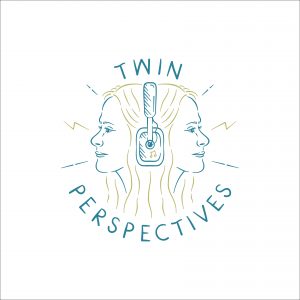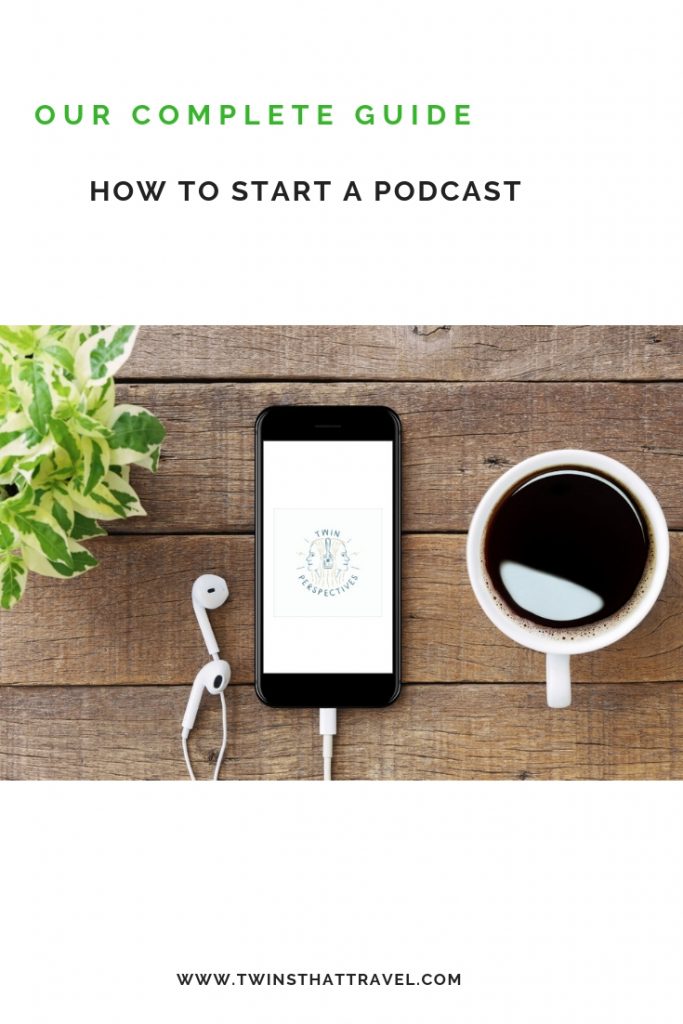I was introduced to my first podcast back in December 2014, when my brother sent a link to the hit series, Serial. Pressing ‘play’ on the first episode as I boarded a night flight home from Washington DC, I hoped it might act as a sleeping aid; some background noise to block out the sound of the passengers around me. Fast forward nine hours, however and as the wheels of the plane touched down at Heathrow, I was still wide awake. The last nine hours across the atlantic had been a blur of enthralling back-to-back podcast episodes. I was hooked.
Although I’d been listening to podcasts for several years, the thought that perhaps I could launch my very own series never occurred to me. Aside from the usual humiliation of listening back to my own voice, I presumed running a podcast was reserved for those with access to a recording studio, expensive microphones and extensive editing software. I had no idea on how to start a podcast.
Wanting to find a new media that allowed us to convey our personalities a little more in 2018, however, and knowing that YouTube was not the platform for us, I decided to take a small peak into the intricacies of running a podcast. After just a few hours of research, and much to my delight, I realised that podcasting wasn’t a whole lot different to mine and Laura’s early 90’s ventures into recording our own (pretend) radio show. In fact, the only difference would be the vague hope that not all the ‘callers’ or interviewees we hosted on the podcast were entirely fabricated.

Nearly a year on, and our podcast Twin Perspectives is now our least time intensive piece of regular TTT content. Plonking ourselves down in front of our microphone, or popping it in our handbag to take to an interview, we’ve found the once daunting podcast to be an easy, quick and enjoyable way to talk to our loyal audience.
If you’re considering launching your own podcast this year but are a little confused as to how the process works, read on.
Below our are steps on how to start a podcast.
Step One: Find a platform
In order to broadcast your dulcet tones to the nation, you’ll firstly need to find a platform in which to upload your podcasts to. There are many platform options out there, with just a few mentioned below:
We use Audioboom to host our podcasts. This costs $9.99 a month and allows us to publish up to five monthly episodes and up to 10,000 plays per month. This was a great option for us as beginner podcasters, with the option of upgrading to larger accounts if we need to do so.
Once you have your host, you can then further distribute your podcast across other platforms, including iTunes podcast. This is again a surprisingly simple process of completing a form for submission. There is a handy ‘distribute’ page on Audioboom that allows us to sign up to many platforms, including iTunes podcast, Spotify, Deezer and Apple Play. The more channels you’re signed up to, the easier it will be to improve your podcast reach.
Step Two: Buy a microphone
Finding a high quality yet affordable microphone for our debut into the podcasting world was our key priority. After some research, we settled on the Blue Yeti Microphone, the number one podcast microphone. Not wanting to spend too much on something that we weren’t sure we would pursue long term, we felt this was a good compromise. We’ve used this microphone to record as a two, and even for interviewing as a four; the audio remaining high quality.
Microphone accessories: We have tried a few accessories over the course of the year including buying a pack of the standard microphone mufflers and trying the swivel pop filter. Both have been extremely useful in lessening background noise and helping lessen the ‘popping’ created by speaking when using words with hard consonants.
Headphones: Headphones are a hugely important component of your podcast tool kit. Ensuring you can hear your own voice (each presenter should have a pair) means you can adjust your voice as you hear it, i.e. if you’re speaking too loudly. It also allows you to hear ambient background noise that’s being picked up by the microphone that you can’t necessarily hear with the naked ear. We learned the importance of headphones the hard way after recording a podcast oblivious to the high pitched printer sound being picked up by the microphone for the entirety of the podcast.
As most microphones only have one jack, you’ll also need to buy an audio splitter so you can plug them all in.
Step Three: Find your style
Admittedly, the style of our podcast wasn’t something we thought through too carefully. Instead, our informal style of simply chatting to one another as sisters inadvertently created us our own rambling style. Thinking that there might be a gap in the podcast market for a travel related podcast, however, we decided to bring our travels to life through anecdotes and stories that didn’t make the cut in our more formal blog post writing.
Much like Instagram, with a fast growing market for podcasts, setting yourself apart from others will be key to carving out your own niche. Interviews are also a great way to build your podcasts reach and audience -these don’t necessarily need to be done in person, with a Skype recording being adequate enough.
Step Four: Recording/editing software
Recording and editing our podcast was another aspect of podcasting that I found surprisingly easy.
In order to record our podcast, we use the free Mac software ‘GarageBand’, before exporting it to the free editing tool Audacity – which can be downloaded online. You can edit in GarageBand, but we find Audacity easier to use in the editing out of our ‘umms’ and ‘likes’ (much to our relief). Once edited, you can then export your track as a WAV or MP3 file (MP3 is far smaller and quicker to upload) before uploading it onto your chosen podcast host.
Step Five: Promoting your podcast through appropriate channels
Once your podcast is edited and uploaded onto your chosen provider, the final step is to distribute it across as many channels as possible. The most obvious, and perhaps important channel, to connect your podcast up to is Apple Podcasts. In order to have a podcast accessible on iTunes, you must submit your podcast for review. This can take several weeks, but once done means your podcast is now searchable and findable on the holy grail.
We also have a podcast section on our blog, where each podcast is embedded into a new blog post. This is useful in helping to build traffic to your website as well as allowing new readers who might not know about our podcast to discover it. We do find, however, that the majority of our listens come from direct plays (i.e. not through the blog).
Step Six: Earning money through your podcast
As with any online platform, podcasts can provide you with an income stream. Platforms such as Audioboom offer this as part of their service once you reach 10,000 downloads a month – helping to hook you up with their own advertisers. Alternatively, you could do this manually yourself – recording your own adverts to sit in your podcast for a brand. The process is the same as partnering on a sponsored blog post or influencer campaign, firstly ensuring your audience is compatible with the brand before working out fee based on number of listens.
This is an extremely useful guide on what you should be charging for advertising on your podcast.
Other considerations
Although the concept of a podcast is for it to be an audio experience, you don’t necessarily need to stick to these constraints. We have recorded a podcast whilst live on Instagram; answering questions as they came in on the topic of self-employment. This allowed people to have the visual experience of us recording the podcast that (seemed) to add an extra layer of entertainment and engagement.
If you’re looking to venture even further, recording your podcasts for YouTube could also be another option to gain reach and to find a new audience.
Launching your own podcast needn’t be an expensive or stressful experience. In fact, once you have bought your equipment, running your podcast is a fairly inexpensive and time-efficient process. Over the past year, we’ve found that Twin Perspectives is our most consumed ‘product’ from our audience and is a hugely useful way to grow and engaged community.
Pin for later! How to start a podcast:

